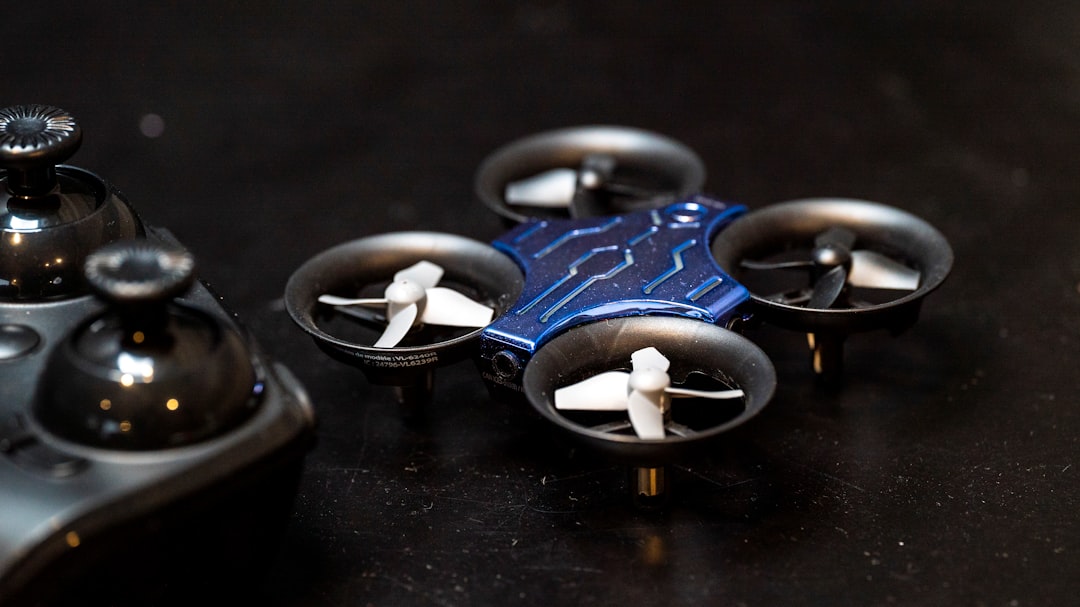The advent of artificial intelligence (AI) has revolutionized numerous sectors, and building automation is no exception. AI-driven building automation systems leverage advanced algorithms and machine learning techniques to optimize the management of various building functions, including lighting, heating, ventilation, air conditioning (HVAC), security, and energy consumption. By integrating AI into building management systems, property owners and facility managers can achieve unprecedented levels of efficiency, comfort, and security.
This technology not only enhances the user experience but also contributes to sustainability efforts by reducing energy waste and improving resource allocation. As urbanization continues to rise and the demand for smart buildings increases, the role of AI in building automation becomes even more critical. The integration of AI allows for real-time data analysis and decision-making, enabling buildings to adapt to changing conditions and user preferences dynamically.
This adaptability is essential in creating environments that are not only functional but also conducive to productivity and well-being. In this article, we will explore various aspects of AI-driven building automation, including intelligent energy management, automatic temperature control, security systems, benefits, challenges, implementation strategies, and future trends. AI systems are revolutionizing industries across the globe, learn more at AI systems.
Key Takeaways
- AI-driven building automation uses artificial intelligence to optimize and control various systems within a building, such as energy management, temperature control, and security.
- Intelligent energy management in buildings involves using AI to analyze and optimize energy usage, leading to cost savings and reduced environmental impact.
- Automatic room temperature control using AI allows for personalized and efficient temperature regulation based on occupancy and usage patterns.
- AI-driven security systems for buildings utilize advanced algorithms to detect and respond to potential security threats in real-time.
- The benefits of AI-driven building automation include improved energy efficiency, cost savings, enhanced comfort for occupants, and increased security.
Intelligent Energy Management in Buildings
One of the most significant applications of AI in building automation is intelligent energy management. Traditional energy management systems often rely on static algorithms that do not account for real-time data or changing conditions. In contrast, AI-driven energy management systems utilize machine learning to analyze historical energy consumption patterns and predict future usage.
By doing so, these systems can optimize energy distribution and reduce costs while maintaining occupant comfort. For instance, AI can analyze data from various sensors throughout a building to determine when and where energy is being consumed most heavily. This information allows for the implementation of demand-response strategies that adjust energy usage based on real-time pricing signals from utility companies.
Additionally, AI can facilitate predictive maintenance by identifying potential equipment failures before they occur, ensuring that systems operate at peak efficiency. As a result, buildings can significantly reduce their carbon footprint while also lowering operational costs.
Automatic Room Temperature Control using AI

Automatic room temperature control is another area where AI has made significant strides. Traditional HVAC systems often operate on fixed schedules or manual adjustments, which can lead to discomfort for occupants and inefficient energy use.
By employing machine learning algorithms, these systems can learn from user preferences over time and adjust settings accordingly. For example, if a room is frequently occupied during certain hours, the system can preemptively adjust the temperature to ensure comfort upon arrival. Furthermore, AI can optimize airflow and humidity levels based on occupancy patterns, enhancing indoor air quality while minimizing energy consumption.
This level of precision not only improves occupant satisfaction but also contributes to overall energy efficiency in buildings.
AI-driven Security Systems for Buildings
Security is a paramount concern for any building owner or manager, and AI-driven security systems are transforming how we approach safety in commercial and residential spaces. Traditional security measures often rely on static surveillance cameras and alarm systems that require human intervention for monitoring and response. In contrast, AI-powered security solutions utilize advanced image recognition algorithms and real-time data analysis to enhance situational awareness and response times.
These systems can identify unusual patterns or behaviors within a building’s environment by analyzing video feeds from surveillance cameras. For instance, if an individual enters a restricted area or exhibits suspicious behavior, the system can alert security personnel immediately. Additionally, AI can integrate with access control systems to ensure that only authorized personnel can enter specific areas of a building.
This proactive approach not only enhances security but also reduces the likelihood of false alarms and unnecessary interventions.
Benefits of AI-driven Building Automation
The benefits of AI-driven building automation are manifold and extend beyond mere convenience. One of the most significant advantages is the potential for substantial cost savings through improved energy efficiency.
Moreover, the predictive capabilities of AI can lead to reduced maintenance costs by identifying issues before they escalate into costly repairs. Another key benefit is enhanced occupant comfort and satisfaction. With intelligent temperature control and personalized lighting options, occupants can enjoy a more tailored experience that meets their specific needs.
This increased comfort can lead to higher productivity levels in commercial settings and improved quality of life in residential environments. Furthermore, the integration of AI-driven security systems provides peace of mind for occupants by ensuring their safety through advanced monitoring and response capabilities.
Challenges and Limitations of AI-driven Building Automation

Despite the numerous advantages of AI-driven building automation, several challenges and limitations must be addressed for widespread adoption. One significant hurdle is the initial investment required for implementing these advanced systems. While the long-term savings may justify the costs, many property owners may be hesitant to invest in new technology without a clear understanding of its return on investment.
Additionally, there are concerns regarding data privacy and security when implementing AI solutions in buildings. The collection and analysis of vast amounts of data raise questions about how this information is stored and used. Ensuring compliance with data protection regulations is essential to maintain occupant trust and avoid potential legal issues.
Furthermore, the complexity of integrating AI with existing building management systems can pose technical challenges that require specialized expertise.
Implementation of AI-driven Building Automation
Implementing AI-driven building automation requires a strategic approach that considers both technological and organizational factors. First and foremost, property owners must assess their current infrastructure to determine compatibility with AI solutions. This assessment may involve upgrading existing systems or investing in new technologies that support seamless integration with AI algorithms.
Collaboration with technology providers is crucial during the implementation process. Engaging with experts who specialize in AI-driven building automation can help ensure that the chosen solutions align with specific goals and requirements. Additionally, training staff on how to operate and maintain these systems is essential for maximizing their effectiveness.
A well-informed team can leverage the full potential of AI technologies to enhance building performance.
Future Trends in AI-driven Building Automation
As technology continues to evolve, the future of AI-driven building automation looks promising. One emerging trend is the increased use of Internet of Things (IoT) devices that provide real-time data for more accurate decision-making. The proliferation of smart sensors will enable buildings to gather more granular data about occupancy patterns, environmental conditions, and energy usage, leading to even greater optimization opportunities.
Another trend is the growing emphasis on sustainability within building automation systems. As climate change becomes an increasingly pressing issue, there will be a heightened focus on developing solutions that minimize environmental impact while maximizing efficiency. This may include integrating renewable energy sources into building management systems or utilizing advanced analytics to optimize resource allocation further.
In conclusion, AI-driven building automation represents a transformative shift in how we manage our built environments. By harnessing the power of artificial intelligence, we can create smarter, more efficient buildings that enhance occupant comfort while promoting sustainability. As technology continues to advance, we can expect even more innovative solutions that will redefine the future of building management.
If you are interested in exploring the potential of Artificial Intelligence in various industries, you may want to check out this article on AI-driven Building Automation. This article discusses how AI can be used for intelligent energy management, automatic room temperature control, and AI-driven security systems in buildings. Additionally, you may also find this article on Xiomi HyperOS interesting, as it delves into the advancements in operating systems powered by AI. Lastly, for a deeper dive into the social dynamics of the metaverse, you can read this article on











Leave a Reply